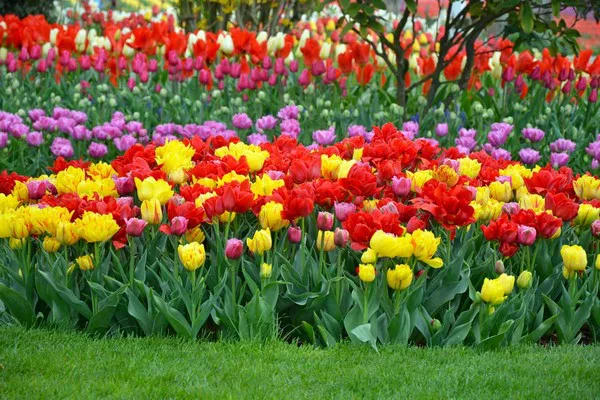Dahlias, with their captivating blooms and wide array of colors and shapes, are beloved additions to gardens and landscapes. However, like any other plant, dahlias are susceptible to attacks by various pests that can compromise their health and beauty. In this comprehensive article, we delve into the world of pests that attack dahlias, their potential impact on these plants, and proactive measures to control and prevent infestations.
The Culprits: Common Pests Targeting Dahlias
1. Aphids (Aphidoidea): Aphids are tiny, soft-bodied insects that congregate on the tender shoots and undersides of dahlia leaves. They pierce the plant tissues and feed on the sap, causing wilting, stunted growth, and the development of sticky honeydew. Aphids reproduce rapidly, making them a significant threat to dahlias.
2. Spider Mites (Tetranychidae): Spider mites are minuscule arachnids that thrive in hot and dry conditions. They puncture the plant cells and extract sap, leading to yellowing leaves, fine webbing, and an overall decline in plant health.
3. Slugs and Snails (Gastropods): Slugs and snails are notorious for their nocturnal feeding habits. They chew irregular holes in dahlia leaves and flowers, leaving behind a telltale trail of slime. These pests can cause considerable damage, particularly to young dahlia plants.
4. Thrips (Thripidae): Thrips are tiny, slender insects that damage dahlia foliage by sucking out the cell contents. Infested leaves may show silvery streaks or tiny black fecal spots. Thrips can transmit viral diseases, further compromising the plant’s health.
5. Earwigs (Dermaptera): Earwigs feed on dahlia petals, leaves, and buds, causing irregular holes and ragged edges. They are especially active at night, making them difficult to spot during the day.
6. Japanese Beetles (Popillia japonica): Japanese beetles are metallic green insects with coppery-brown wing covers. They skeletonize dahlia leaves by consuming the tissue between veins, leaving them lace-like in appearance.
The Impact: Recognizing Pests Damage on Dahlias
1. Distorted Growth: Pests like aphids and thrips can cause distorted growth in dahlia plants, leading to curled or misshapen leaves and flowers.
2. Yellowing and Wilting: Spider mite infestations often result in yellowing leaves that eventually wilt and drop prematurely.
3. Holes and Chewing Damage: Slugs, snails, and earwigs leave visible holes and chewing marks on dahlia leaves, flowers, and buds.
4. Presence of Webbing: Spider mites produce fine webbing on the affected plant parts, indicating their infestation.
5. Honeydew and Sooty Mold: Aphids excrete sticky honeydew, which can lead to the growth of black sooty mold on the leaves, reducing the plant’s ability to photosynthesize effectively.
Integrated Pest Management (IPM): A Holistic Approach
1. Cultural Practices: Implementing proper cultural practices can significantly reduce the risk of pest infestations. These include regular watering, proper plant spacing, and removing debris where pests may harbor.
2. Plant Selection: Choose dahlia varieties that exhibit resistance to common pests prevalent in your area. Resistant cultivars are less likely to suffer from severe infestations.
3. Beneficial Insects: Encourage beneficial insects like ladybugs, lacewings, and predatory mites that feed on pests to establish a natural balance in the garden.
4. Biological Controls: Employ biological control agents, such as nematodes for soil-dwelling pests or Bacillus thuringiensis (Bt) for caterpillars, to target specific pests without harming beneficial organisms.
5. Mechanical Controls: Handpick larger pests like slugs and snails during nighttime patrols and dispose of them away from the garden.
6. Organic Pesticides: If necessary, resort to organic insecticides made from botanical oils or insecticidal soaps, which have a reduced impact on beneficial insects and the environment.
Early Detection and Monitoring
1. Regular Inspection: Regularly inspect dahlia plants for signs of pest activity, especially on the undersides of leaves and in buds and flowers.
2. Sticky Traps: Use sticky traps to monitor flying pests like thrips and whiteflies and detect infestations early.
3. Yellow Pans: Set up yellow pans filled with water and a drop of dish soap to attract and trap adult Japanese beetles.
Preventive Measures
1. Quarantine New Plants: When introducing new dahlia plants to your garden, quarantine them for a period to ensure they are pest-free before integrating them with existing plants.
2. Clean Garden Tools: Pests and their eggs can be inadvertently transferred through garden tools. Clean and sanitize your tools regularly to prevent the spread of pests.
3. Weed Management: Weeds can serve as hosts for pests. Keep the garden free of weeds to minimize potential infestation sources.
Conclusion
Dahlias, with their alluring beauty, are a treasure in any garden. To safeguard these precious blooms from common pests, gardeners must adopt a proactive and integrated approach to pest management. Recognizing the signs of pest damage, implementing cultural practices, and encouraging natural predators can help maintain a healthy balance in the garden ecosystem. By staying vigilant and practicing preventive measures, gardeners can ensure that dahlias thrive and continue to enchant with their vibrant display of colors season after season.


